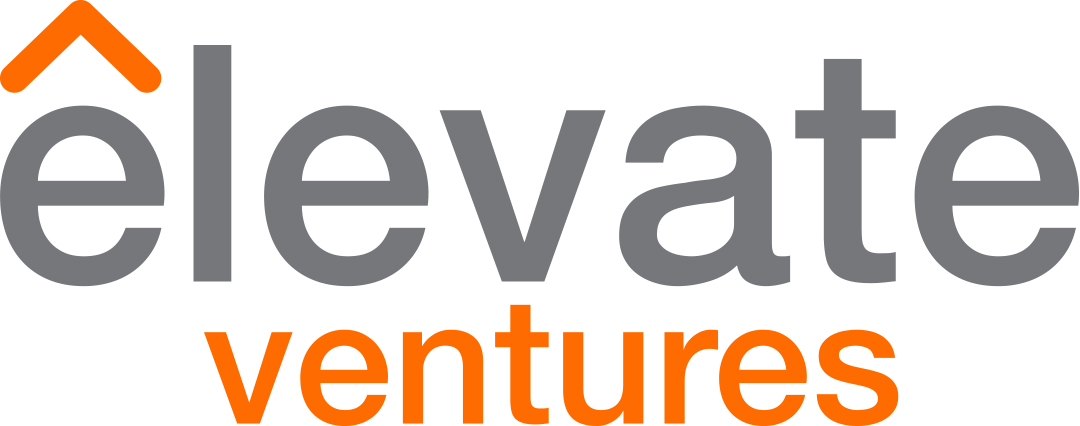April 9, 2019
Welcome to Leading Indiana Ambition – a series of leadership stories fueled by Elevate Ventures highlighting entrepreneurship across the Hoosier state. This month, we profiled Joe Trebley of Scioto Biosciences. Stay tuned next month for more!
CEO Joe Trebley Believes in the Power of the Scioto Team and Good Bacteria
Joe Trebley is Co-Founder and CEO of Scioto Biosciences, an Elevate Ventures portfolio company pursuing breakthroughs in the “very, very hot market” of microbiome technology — using good bacteria to heal the body. Trebley brings over 15 years of experience in early-stage asset development to Scioto. During his tenure as Head of Startups at the Indiana University Research and Technology Corporation, he helped entrepreneurs and academics launch 25 startups. The program’s success inspired the formation of Monon Bioventures, where Trebley is a Co-Founder and CEO. With the launch of Scioto in 2017, Trebley takes a step back from helping other entrepreneurs to focus on growing his own venture.
What first got you into science and technology?
I grew up on a farm in Rushville, Indiana, and my parents were contractors for corn detasseling. I spent my summers out in the heat, walking a row, pulling every tassel. And then I would turn around, come back, pick another row, turn around and come back. It’s awful work. When I was a student at Wabash College, I saw an ad in one of my chemistry classes for a summer internship, and the only question I really asked was, “Is it air conditioned?” So I took my first job in a lab because I didn’t want to go home and detassel corn.
My next internship as an undergraduate was in Boston at the Dana Farber Cancer Institute. There, I had the opportunity to work with some of the top oncology researchers on the planet. I remember coming down from the ninth floor to the cafeteria and seeing kids with no hair, hooked up to IVs. I was like, man, I have to get back to work. We have to make a difference here. That really solidified that I was going to go into science, spend my time developing cures and working on discoveries that improve lives.
As the Head of Startups at the Indiana University Research and Technology Corporation, you were responsible for assisting faculty, staff and students in forming and running more than 25 startup companies. Prior to that, you were in Tech Transfer at Purdue. What makes university-driven technology commercialization different from “traditional” means of bringing a product to market?
“Big pharma and big biotech or are really good at development and marketing, but they’re growing increasingly worse at discovery and innovation.”
Big pharma and big biotech or are really good at development and marketing, but they’re growing increasingly worse at discovery and innovation. They’re getting a lot of pressure from Wall Street to decrease their R&D spend. At the same time, the government, and other institutions and nonprofits, spend a lot of money on basic research, and that tends to be where the best, most innovative, independent science is done. As a result, we’ve got some of the greatest minds in the world in universities here and abroad, working on some of the most out-of-the-box answers to the biggest problems. This is where I find the best opportunities to commercialize what may be answers to unmet medical needs.
The good thing is there is a market for that. Big pharmaceutical and biotech companies are looking to acquire those and partner with those assets.
At the early stage, when you’re still testing in animals, there’s this opportunity in the small biotech space. That’s what gets us excited.
There are also enormous challenges. Often, nonprofit institutions are set up to do basic research, but don’t know how to interface with the for-profit world in a very pragmatic, time-oriented culture. Bridging those cultures is the biggest challenge, but I think it’s worth the reward.
How did Scioto Biosciences get its start and how has it developed?
I was growing tired of selling companies to other people out of a university setting. I wanted to be part of them, to get back out there in the entrepreneurial space. I have a wife, three kids and a dog, so one of my prerequisites was I had to be able to get to work and back in a day. You draw that map from Indianapolis, and that’s Chicago and maybe Lansing, Ann Arbor, Cincinnati, Columbus, Peoria, Louisville, West Lafayette and Bloomington. I started mining those areas for ideas that I thought would be attractive, ones that I thought I could align stakeholders around. You need to do that at the stage where you need to raise a round north of $20 million.
Looking at all these different opportunities, I found one at Nationwide Children’s Hospital in Columbus. The team included key opinion leaders around the human microbiome, and they had a really smart, simple idea that I thought was going to be very impactful in a market that we all projected to be very, very hot. Those things have to be aligned. You can’t be just a good idea. There has to be a pull for it.
We went to the National Institute of Health, wrote some small business grants, got a little bit of funding and carried out a couple experiments to make sure that this was really going to be a platform that we could turn into a drug. It worked great, so we went out and raised about $2 million at first as part of a $4 million round. That’s when we talked to the FDA about our plan to move into the clinic. The FDA was extraordinarily helpful and collaborative. This is a brand new therapeutic area, and the FDA doesn’t know any more than we do how this science is going to play out. With the FDA’s support, we recommended to our investors that we take the round up to $4 million to get Scioto through phase one clinical trials. That’s a meaningful inflection point. We were able to raise the full $4 million, and now we’ll be in the clinic during the second quarter of 2019, and the phase one study will be done by the third quarter of 2019.
How do you describe this therapy in layman’s terms?
Feces contains a lot of the good and bad bacteria that come through you. One of the most remarkable stories in the medical field right now is, when people are having severe infections, like gastrointestinal infection such as clostridium difficile, one of the most successful therapies is something called a fecal material transplant. For this therapy, you take feces from one donor and give an enema to the sick patient. It cures the clustering difficile, so there’s something about the bacteria in the feces that’s doing that. This has turned a lot of heads.
What is really turning heads are the unexpected benefits. For example, a patient comes in with clostridium difficile infection, but they’re also comorbid with Parkinson’s disease. This person gets a fecal material transplant, and their Parkinson’s gets better. Scioto is a kind of platform where we can take what you need out of the fecal matter transplant — the specific bacteria you need — and make that into a drug to take orally.
Our first product is a bacteria called lactobacillus reuteri found in breast milk that we believe is critical for the early-stage development of a microbiome. Therapies including chemotherapy or radiation wipe out your GI — it’s a forest fire. Your GI has to be rebuilt, and that’s where lactobacillus reuteri comes in. This good “bug” can also be administered to newborns at risk for necrotizing enterocolitis (NEC), an often-fatal GI disorder. Lactobacillus reuteri can prevent the baby from developing NEC and likely needing to undergo a surgery that has about a 50 percent mortality rate. What’s remarkable about our formulation is that you can see the effects with a single dose. What we envision is that every baby born prematurely, and possibly even every baby born, would get a shot of our formulation of lactobacillus reuteri to protect the GI system.
We’re figuring out this field with everybody else, but we think we’ve got a unique platform that will help us carve out our niche in it. And so the next stage is to shake the bushes for, you know, it’s anywhere between a $15 million to $30 million Series B round to fund two or three phase two clinical trials in 2019.
What’s your advice to entrepreneurs in navigating tech transfer with academic institutions? Any particular insight on IP licensing and how to best position startups for success?
That’s a really big question. Life sciences/pharma/biotech is different from other entrepreneurial areas. If I’m starting an IT company, I really just need a couple million bucks and a Wi-Fi connection. With biotech, I need regulatory guidance, key opinion leaders, clinicians to guide the path — and I need a really good idea. When an idea comes to tech transfer and licensing out of a university, it’s typically only half baked, so you also need good scientists to crack the code.
The intellectual property is part of it. I like to think of IP as a byproduct of good collaboration. One of the biggest challenges is establishing trust with all of your key players. It’s hard to do because you’re coming from different worlds with stigmas associated with both. You really have to have a connection because there are things like contracts to be done along the way. When you are at the early stage, you don’t have time to fight over a contract. That transactional energy and cost will kill you. You have to keep moving. One big piece of advice is to spend time investing in relationships with all the stakeholders because you’re going to need them at some point, and those relationships will be strained at some point. It will happen. It’s not a matter of if, it’s when.
Fundraising for life sciences startups, particularly at pre-clinical stage, is challenging. We already talked about this a little bit. Tell me about your experiences and observations.
It’s sort of bizarre, honestly, and I can’t completely figure it out. One trend that’s interesting in East and the West Coast firms backed by some of the larger players, is that they start out with a big raise, like $50 million in a Series A round. As we dug into the numbers to firm up our budget, we realized that here in the Midwest, we could get through a phase one clinical trial for $4 million. When we talk to institutional investors that are larger than the ones that you’ll find in the Midwest, they’re shocked that we got this progress with that little bit of money. For us, raising a big round of capital prior to de-risking the technology would have been ridiculous.
Locally, there’s capital for early-stage preclinical life science programs. You have to have the right management though. Nobody’s going to come in and bet on a new management team that doesn’t have some gray hair in it. I think that’s different than technology firms and maybe even engineering firms where they’re more comfortable betting on youth. In the biotech and pharma youth is not necessarily a good thing.
As bigger deals happen in Indiana, like Novartis acquiring Endocyte in West Lafayette, people will start to get used to the idea of having success in this area. I think all these things will get easier.
How did you leverage resources to support startups like Scioto and other Monon Bioventures companies? Are there resources at academic institutions or in our community that other life science entrepreneurs should tap into?
I think you’ve just got to be scrappy. I have my favorites. I like going to the NIH. They have a mechanism called “small business grants” focused on small business innovation and research. Writing an NIH grant together is the first thing I do when I engage a faculty member, which does a couple things. One, it has the potential to get money in the door to get you started. And two, and I think this is just as important, it allows you to really work with that faculty member and get down to that level of understanding of what the next three experiments need to be. It’s like a mini noncommittal project. With these grants, you get a free review of your technology from the experts the NIH pulls in. It’s another level of diligence and validation.
What is your team’s vision for Scioto Biosciences and how, as CEO, do you lead the company toward that vision?
It’s tempting to be like 100-percent milestone driven with very specific expectations for each person on the team, right? But one of the things that we’ve done is set up our team so that two or three other guys who work with me could step in and do my job, or someone else’s job, so that we really work almost interchangeably and trust each other completely. That is critical. We’re going to move this product forward as we understand it, and as the team, board and partners develop, we have to be flexible.
One of the things that I usually tell people, and it’s almost always true, is that you start a company based on one idea and if you’re successful, the only thing I really know is that it probably will have nothing to do with that first idea. When you build the team, you build it to move your first idea forward. But you keep things open and bring in the people who can help develop new ideas, too. So if I were to bet, it would be that we will be successful around something that we haven’t even thought of yet.
Finally, what’s your advice for life science startup entrepreneurs from start to finish?
“Don’t get too excited about the highs and don’t get too down about the lows because you don’t know which one is which at the time.”
Don’t get too excited about the highs and don’t get too down about the lows because you don’t know which one is which at the time. In life science, if you find out something devastating early on, well good for you that you found it out early on. Something that seems like a massive disappointment to you at one time may be your biggest blessing in a couple of weeks. If you let yourself get on that emotional rollercoaster, it’ll tear you apart. Do whatever you can to keep yourself healthy and steady because these are not steady waters. Seek out other people who are also fighting the storm because you need a community to do it.


